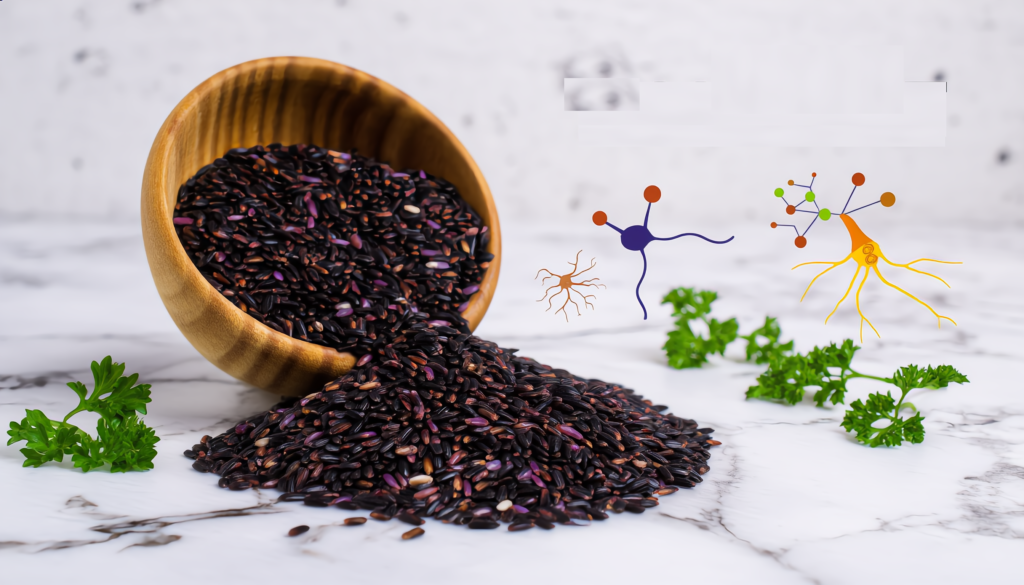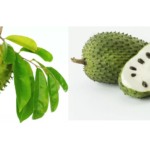Move over, white rice—there’s a new grain in town, and it’s dressed in black. Oryza sativa, better known as black rice or “forbidden rice,” has been stealing the spotlight in the world of nutrition. Once reserved for Chinese emperors (hence the “forbidden” moniker), this deep-purple grain is now winning fans for its unique flavor, stunning color, and, most importantly, its potential to protect your brain from Alzheimer’s disease. But is this ancient rice really a secret weapon against cognitive decline, or just another health-food fad? Let’s dig into the science, the history, and the real-life benefits of adding forbidden rice to your plate.
What Is Oryza Sativa—And Why Is It “Forbidden”?
Black rice (Oryza sativa L., var. japonica or indica) is a whole-grain rice variety native to Asia. Its signature dark hue comes from a high concentration of anthocyanins—the same antioxidants that give blueberries and purple cabbage their color. For centuries, black rice was so prized in China that only royalty could eat it, earning it the nickname “forbidden rice.” Today, it’s celebrated not just for its royal past, but for its nutritional punch and health benefits.
The Nutritional Powerhouse: What Makes Black Rice Special?
Here’s what sets black rice apart from its paler cousins:
- Rich in Anthocyanins: These powerful antioxidants are linked to reduced inflammation, improved heart health, and—crucially—brain protection.
- Whole Grain Goodness: Black rice is minimally processed, retaining its bran and germ for extra fiber, vitamins, and minerals.
- Packed with Protein and Iron: It contains more protein and iron than brown or white rice.
- Low Glycemic Index: It digests more slowly, helping to stabilize blood sugar.
But the real magic lies in its impact on the brain, especially when it comes to Alzheimer’s risk.
Alzheimer’s Disease: The Growing Threat
Alzheimer’s disease is the most common form of dementia, marked by progressive memory loss, cognitive decline, and changes in behavior. As populations age, Alzheimer’s is becoming a global crisis. While there’s no cure, research shows that diet and lifestyle can play a major role in prevention—and that’s where black rice comes in.
The Science: How Black Rice Protects Your Brain
1. Anthocyanins: Nature’s Brain Shield
Black rice’s deep color is a sign of its anthocyanin content. These compounds have been shown to:
- Combat Oxidative Stress: Anthocyanins neutralize free radicals, which damage brain cells and are implicated in Alzheimer’s progression.
- Reduce Inflammation: Chronic brain inflammation is a key driver of neurodegeneration. Anthocyanins help calm this process.
- Cross the Blood-Brain Barrier: Unlike many nutrients, anthocyanins can reach the brain, where they protect neurons and support cognitive function.
2. Amyloid Beta: The Alzheimer’s Culprit
A hallmark of Alzheimer’s is the buildup of amyloid beta (Aβ) plaques in the brain. These sticky proteins disrupt communication between neurons and trigger cell death.
- Black Rice vs. Amyloid Beta: Animal studies show that black rice extract can protect against memory loss and cognitive impairment caused by Aβ buildup. In a key experiment, mice injected with Aβ showed significant memory problems—unless they were given black rice extract, which improved their performance on memory tests and reduced brain damage from oxidative stress.
- Lipid Peroxidation & Nitric Oxide: Black rice extract also lowered levels of malondialdehyde (MDA) and nitric oxide (NO)—markers of oxidative stress and inflammation—in the brain, liver, and kidneys.
3. Memory, Learning, and Cognitive Function
- Animal Studies: Mice with induced cerebral ischemia (restricted blood flow to the brain) showed improved learning and memory after receiving black rice extract, thanks to reduced brain lipid oxidation and increased antioxidant activity.
- Human Studies: While more research is needed, early trials in people with subjective memory impairment found that black rice extract improved subjective memory and trended toward better cognitive test scores, with no adverse effects.
4. Neuroprotective and Anti-Aging Effects
- Lifespan Extension: In studies on fruit flies, black rice extract increased lifespan, boosted antioxidant enzyme activity, and reduced expression of genes linked to neurodegeneration.
- Synergy with Other Antioxidants: Black rice is unique for its combination of water-soluble (anthocyanins) and fat-soluble (vitamin E) antioxidants, which may work together to protect brain cells from inflammation and aging.
Forbidden Rice and the MIND Diet
The MIND diet—a hybrid of the Mediterranean and DASH diets—emphasizes whole grains, berries, leafy greens, and nuts to reduce Alzheimer’s risk. Black rice fits perfectly into this framework:
- Whole Grain: The MIND diet recommends three servings of whole grains daily, which is linked to up to 53% lower Alzheimer’s risk.
- Anthocyanin-Rich: Berries and other anthocyanin-packed foods are key MIND diet components. Black rice delivers these same brain-boosting compounds.
Beyond Alzheimer’s: Other Brain and Health Benefits
- Improved Blood Flow: Anthocyanins in black rice help keep blood vessels healthy, supporting brain oxygenation.
- Lowered Risk of Diabetes and Heart Disease: Black rice’s fiber and antioxidant content support overall metabolic and cardiovascular health, both of which are linked to brain health
- Potential Mood Benefits: Some studies suggest black rice may help reduce depression and anxiety by lowering inflammation and oxidative stress.
How to Add Black Rice to Your Diet
Ready to give your brain a royal treat? Here’s how to enjoy forbidden rice:
- Cook It Like Brown Rice: Rinse, then simmer 1 cup black rice with 2 cups water for 30–40 minutes.
- Use in Bowls and Salads: Its nutty flavor and chewy texture make it perfect for grain bowls, salads, or as a side dish.
- Try Black Rice Porridge: For breakfast, cook with coconut milk and top with fruit and nuts.
- Mix with Other Grains: Blend with quinoa or brown rice for color and nutrition variety.
What the Experts Say
- “Black rice extract supplementation may prevent memory and cognition deficits caused by amyloid beta-induced oxidative stress.
- “Anthocyanins in black rice could improve learning and memory as well as reduce the level of lipid peroxidation damage to the brain.
- “Forbidden rice is a whole grain, one of the 10 brain healthy food groups in the MIND diet study.
Are There Any Downsides?
Black rice is generally safe and nutritious for most people. However, it is still a carbohydrate-rich food, so portion control is wise for those managing blood sugar. Also, as a whole grain, it contains more fiber than white rice, which may require a gradual introduction for sensitive digestive systems.
The Bottom Line: Should You Eat Forbidden Rice for Brain Health?
The evidence is mounting: Oryza sativa, the forbidden black rice, is far more than a culinary curiosity. Its rich anthocyanin content, antioxidant power, and whole-grain goodness make it a standout choice for anyone looking to protect their brain and lower their risk of Alzheimer’s disease. While no single food is a magic bullet, adding black rice to a balanced, plant-forward diet could be a delicious and powerful way to support cognitive health for years to come.
So next time you’re planning dinner, channel your inner emperor and let forbidden rice reign supreme on your plate—and in your brain.








